Coral reefs are often referred to as the rainforests of the sea, and for good reason. These vibrant ecosystems are teeming with life, providing a habitat for an astonishing variety of marine species. But did you know that they also play a crucial role in maintaining the health of our oceans? From supporting fisheries to protecting coastlines from erosion, coral reefs are indispensable to both marine life and human communities. However, these underwater treasures are facing unprecedented threats, and their conservation is more critical than ever.
Imagine diving into a crystal-clear ocean, surrounded by a kaleidoscope of colors and marine creatures. This is the beauty that coral reefs offer, but it is a beauty that is rapidly fading. The loss of coral reefs would not only mean the disappearance of countless species but also the collapse of local economies that depend on fishing and tourism. It’s a ripple effect that extends far beyond the water's surface, impacting food security, livelihoods, and even climate regulation.
So, why should we care about coral reef conservation? Here are a few compelling reasons:
As we delve deeper into the importance of coral reefs, it becomes clear that their conservation is not just an environmental issue; it is a matter of global significance. The interconnectedness of ecosystems means that the health of coral reefs directly impacts the health of our planet. The urgency to act is palpable, and it starts with understanding the threats they face and the steps we can take to mitigate these dangers.
In the following sections, we will explore the ecological significance of coral reefs, the myriad threats they encounter, and the proactive measures we can adopt to ensure their survival for generations to come. Together, we can be the voices for these vibrant underwater ecosystems, advocating for their protection and restoration.
Q: What are coral reefs made of?
A: Coral reefs are primarily made up of calcium carbonate structures created by coral polyps, tiny marine animals that live in colonies. These polyps build the reef over time by depositing calcium carbonate, forming the intricate structures we see today.
Q: How do coral reefs benefit humans?
A: Coral reefs provide numerous benefits, including supporting fisheries, boosting tourism, protecting coastlines, and contributing to medical research by offering potential new medicines.
Q: What can individuals do to help protect coral reefs?
A: Individuals can help protect coral reefs by reducing plastic use, participating in beach clean-ups, supporting sustainable seafood practices, and advocating for policies that protect marine environments.

Coral reefs are often referred to as the "rainforests of the sea," and for good reason. These vibrant ecosystems are not just beautiful to look at; they are crucial for maintaining marine biodiversity. Coral reefs provide habitat, food, and breeding grounds for a vast array of marine species. In fact, it is estimated that coral reefs support about 25% of all marine life, despite covering less than 1% of the ocean floor. This statistic alone highlights their immense ecological significance.
Think of coral reefs as underwater cities bustling with life. Each coral colony acts like a building, providing shelter for fish, invertebrates, and other marine organisms. The complex structure of the reef creates numerous niches where species can thrive. For instance, small fish find refuge among the coral branches, while larger predators patrol the water above. This interconnectedness contributes to a rich tapestry of life that is both fascinating and essential for the health of our oceans.
Moreover, coral reefs play a vital role in supporting local economies. They are a source of food, income, and tourism for millions of people around the world. The fishing industry relies heavily on healthy coral reefs, as they serve as breeding and nursery grounds for many commercially important fish species. Additionally, coral reefs attract tourists who come to experience their beauty through activities like snorkeling and diving, which can provide significant revenue for coastal communities.
In addition to their economic benefits, coral reefs also offer protection against coastal erosion. The physical structure of reefs dissipates wave energy, reducing the impact of storms and high waves on shorelines. This natural barrier protects coastal communities, infrastructure, and ecosystems from damage. Without healthy coral reefs, many coastal regions would be more vulnerable to the devastating effects of climate change and extreme weather events.
However, the ecological importance of coral reefs extends beyond just their immediate surroundings. They are integral to the global marine ecosystem, influencing nutrient cycling and energy flow. The symbiotic relationship between corals and the algae (zooxanthellae) that live within them is a perfect example of this. The algae provide corals with energy through photosynthesis, while corals offer the algae a protected environment and access to sunlight. This relationship is a cornerstone of reef health and productivity.
In conclusion, the ecological importance of coral reefs cannot be overstated. They are vital for biodiversity, economic stability, coastal protection, and global marine health. As stewards of our planet, it is our responsibility to ensure that these incredible ecosystems are preserved and protected for future generations. By understanding their value, we can better appreciate the need for conservation efforts that aim to safeguard these underwater treasures.
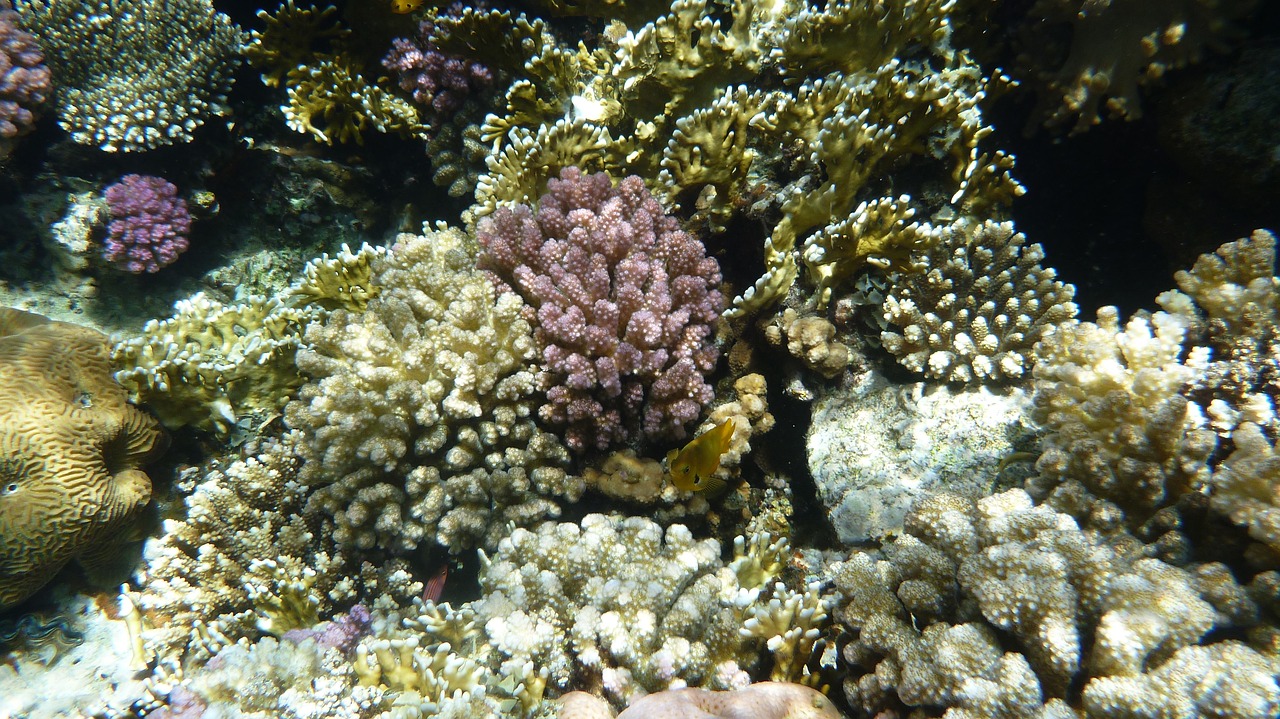
Coral reefs are often referred to as the "rainforests of the sea," and just like their terrestrial counterparts, they face a myriad of threats that jeopardize their existence. Understanding these threats is crucial for fostering effective conservation strategies. The primary dangers to coral reefs include climate change, pollution, overfishing, and habitat destruction. Each of these factors contributes to the degradation of these vital ecosystems, and their cumulative effect can be devastating.
One of the most pressing threats is climate change. Rising ocean temperatures lead to a phenomenon known as coral bleaching, where corals expel the symbiotic algae living in their tissues. This not only weakens the corals but can also lead to widespread mortality if temperatures remain elevated for extended periods. Imagine a vibrant city losing its inhabitants overnight; that’s what coral bleaching does to these underwater metropolises. The alarming rate at which our planet is warming makes this a critical issue that needs urgent attention.
Another significant threat comes from ocean acidification. As carbon dioxide levels in the atmosphere increase, a substantial portion of it is absorbed by the oceans. This process lowers the pH of seawater, making it more acidic. The impact on coral reefs is profound; acidification hampers the ability of corals to grow and maintain their structural integrity. Think of it as a construction site where the materials are slowly dissolving, making it impossible to build strong structures. The future of coral reefs hangs in the balance as we continue to pump greenhouse gases into the atmosphere.
Furthermore, pollution poses a severe threat to coral ecosystems. Agricultural runoff, plastic waste, and untreated sewage find their way into the oceans, leading to nutrient overloads that cause harmful algal blooms. These blooms can suffocate corals, blocking sunlight and disrupting the delicate balance of marine ecosystems. Imagine a beautiful garden overrun by weeds; that’s how pollution transforms vibrant coral reefs into lifeless underwater deserts.
Lastly, we cannot overlook the impact of overfishing. The relentless pursuit of fish not only depletes fish populations but also disrupts the intricate relationships that exist within marine ecosystems. Certain fish species play crucial roles in maintaining coral health—by grazing on algae, for example. When these fish are overfished, algae can proliferate unchecked, smothering corals and reducing biodiversity. It’s like removing key players from a sports team; the entire team struggles to perform without them.
In summary, the threats to coral reefs are multifaceted and interconnected. Addressing these issues requires a concerted effort from individuals, communities, and governments worldwide. Only through awareness and action can we hope to protect these precious ecosystems for future generations.

Climate change is not just a buzzword; it’s a reality that is reshaping our planet, and one of the most alarming effects is coral bleaching. Imagine a vibrant underwater garden, teeming with life, suddenly fading to white—a ghostly shadow of its former self. This phenomenon occurs when corals, stressed by rising ocean temperatures, expel the symbiotic algae (zooxanthellae) that provide them with color and essential nutrients. Without these algae, corals lose their primary source of energy, making them vulnerable to disease and mortality.
Coral bleaching is like a canary in the coal mine, a clear indicator that our oceans are in distress. It’s not just about the corals; the repercussions ripple through the entire marine ecosystem. When corals bleach, they can no longer support the myriad of species that rely on them for habitat and food. This leads to a decline in biodiversity, which can destabilize the entire marine food web. For instance, fish populations that depend on healthy reefs for breeding and feeding may dwindle, affecting local fisheries and the communities that depend on them.
To put the severity of this issue into perspective, consider the following statistics:
| Year | Percentage of Bleached Reefs |
|---|---|
| 1998 | 16% |
| 2010 | 30% |
| 2016 | 60% |
| 2020 | 50% |
The alarming rise in coral bleaching events can be attributed to two main factors: rising sea temperatures and ocean acidification. As global temperatures continue to rise, the frequency and severity of bleaching events are expected to increase. In fact, scientists predict that if current warming trends continue, we could lose up to 90% of the world’s coral reefs by 2050. This is not just a statistic; it’s a wake-up call for all of us.
So, what can we do about it? While the problem may seem overwhelming, there are steps we can take to mitigate climate change and protect our beloved coral reefs. Reducing carbon emissions, supporting sustainable fishing practices, and advocating for marine conservation are all ways we can contribute to the health of our oceans. Remember, every little action counts—whether it’s reducing plastic use, participating in beach clean-ups, or supporting policies aimed at fighting climate change.
In conclusion, coral bleaching is a stark reminder of the fragility of marine ecosystems in the face of climate change. By understanding the importance of coral reefs and the threats they face, we can take meaningful action to protect these underwater treasures for generations to come. Are you ready to be part of the solution?

Ocean acidification is a silent yet deadly phenomenon that is gradually altering the very fabric of our marine ecosystems. As carbon dioxide (CO2) levels in the atmosphere rise—primarily due to human activities like burning fossil fuels—much of this excess CO2 is absorbed by our oceans. This process leads to a decrease in the pH levels of seawater, making it more acidic. The implications of this shift are profound, particularly for coral reefs, which rely on a delicate balance of conditions to thrive.
Corals are not just beautiful structures; they are living organisms that depend on calcium carbonate to build their skeletons and maintain their structural integrity. When ocean acidity increases, the availability of carbonate ions—essential for coral calcification—decreases. This makes it significantly more challenging for corals to grow and repair themselves. In fact, studies have shown that higher acidity can reduce coral growth rates by up to 50%. Imagine trying to build a house with crumbling bricks; that's what corals are facing in an acidic ocean.
But the impact of ocean acidification extends beyond just the corals. It disrupts the entire marine food web. Many marine species, including shellfish like oysters and clams, are also affected. As their ability to form shells diminishes, it leads to declines in their populations, which in turn affects the species that rely on them for food. Here’s a quick look at the cascading effects of ocean acidification:
Moreover, the loss of coral reefs due to acidification can lead to diminished coastal protection. Coral reefs act as natural barriers against storms and erosion, safeguarding coastal communities. As these reefs deteriorate, the risks of flooding and damage from storms increase, putting both human lives and livelihoods at risk.
In conclusion, ocean acidification is not just a scientific term; it represents a serious threat to the health of our oceans and the myriad of life forms that depend on them. The clock is ticking, and urgent action is required to mitigate CO2 emissions and protect these vital ecosystems. Addressing ocean acidification is a crucial step in ensuring that coral reefs can continue to flourish and provide their invaluable services for generations to come.
Q: What causes ocean acidification?
A: Ocean acidification is primarily caused by the absorption of excess carbon dioxide from the atmosphere into the ocean, leading to a decrease in pH levels.
Q: How does ocean acidification affect marine life?
A: It affects marine life by reducing the availability of carbonate ions, which are essential for organisms like corals and shellfish to build their skeletons and shells.
Q: Can ocean acidification be reversed?
A: While we cannot reverse the acidification that has already occurred, we can take steps to reduce CO2 emissions to slow down and eventually stabilize ocean pH levels.
Q: What can individuals do to help combat ocean acidification?
A: Individuals can help by reducing their carbon footprint, supporting policies aimed at reducing greenhouse gas emissions, and participating in local conservation efforts.
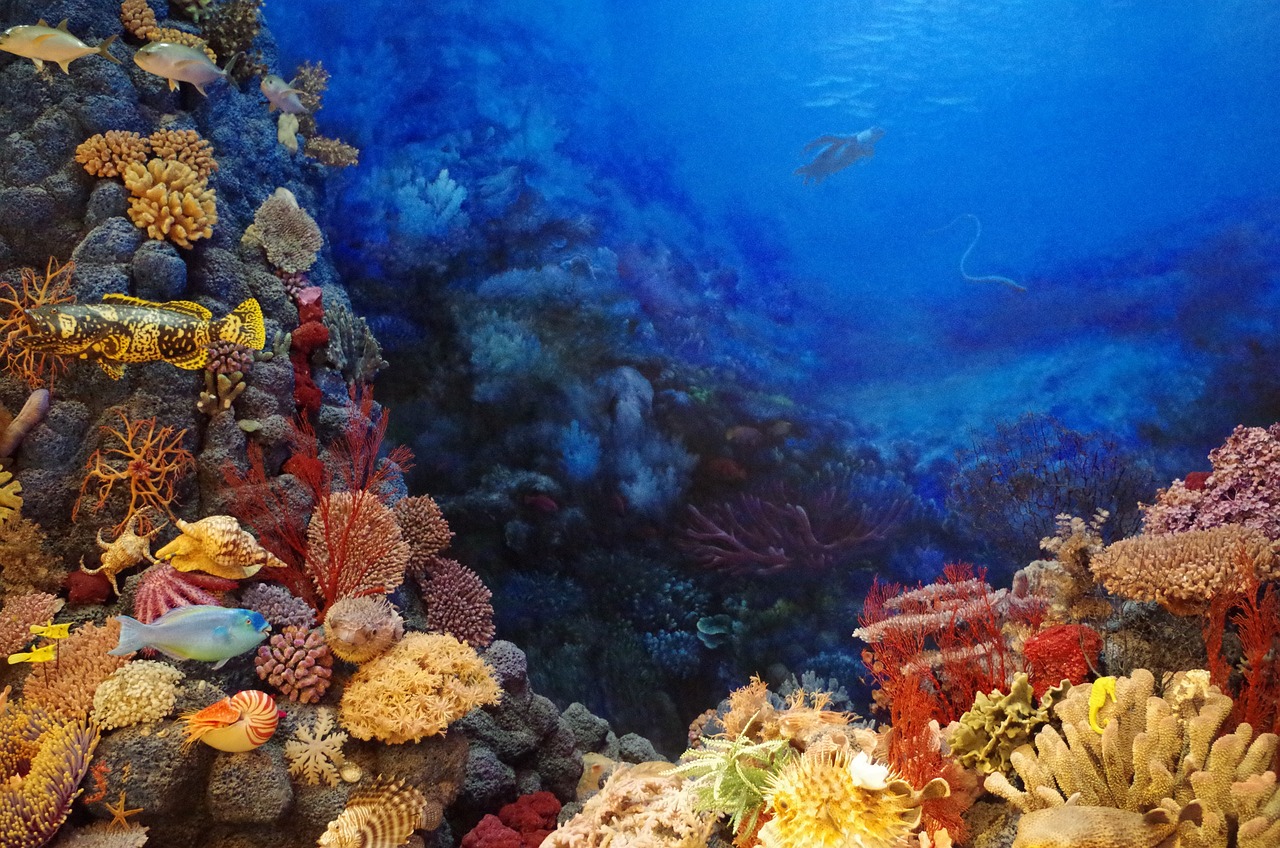
Pollution poses a significant threat to coral reefs, acting as a silent assassin that disrupts the delicate balance of these vibrant ecosystems. When we think of pollution, we often envision smog-filled skies or litter-strewn beaches, but the impact on underwater life is equally devastating. The sources of pollution are varied and insidious, ranging from agricultural runoff to plastic waste, each contributing to the gradual decline of coral health.
One of the primary culprits is nutrient runoff from fertilizers used in agriculture. When it rains, these nutrients wash into rivers and ultimately flow into the oceans. While nutrients are essential for marine life, too much of them can lead to harmful algal blooms. These blooms can smother corals, blocking sunlight and preventing photosynthesis, which is crucial for their survival. Imagine a garden where weeds overtake the flowers; that’s what happens to coral reefs when algal blooms proliferate.
Additionally, plastic pollution has become a pervasive issue, with millions of tons of plastic entering our oceans each year. This waste not only physically harms marine organisms but also introduces toxic substances into the water. Corals can become entangled in plastic debris, leading to injury or death. Furthermore, when plastics break down, they release harmful chemicals that can disrupt the reproductive systems of marine life, compounding the problem and threatening entire ecosystems.
Another significant factor is sewage discharge, which introduces pathogens and excess nutrients into marine environments. The presence of these pathogens can lead to diseases in corals, making them more susceptible to stress and mortality. The effects of sewage pollution can be likened to a double-edged sword; it not only harms the corals directly but also compromises the overall health of the reef, making it less resilient to other stressors such as climate change.
To better understand the various sources of pollution impacting coral reefs, consider the following table:
| Source of Pollution | Impact on Coral Reefs |
|---|---|
| Agricultural Runoff | Causes algal blooms that suffocate corals |
| Plastic Waste | Physical harm and introduction of toxins |
| Sewage Discharge | Introduces pathogens and excess nutrients |
In summary, pollution is not just an environmental issue; it’s a threat that endangers the very foundations of marine biodiversity. Each of us has a role to play in combating this crisis. By reducing our plastic use, supporting sustainable agricultural practices, and advocating for better waste management systems, we can help protect coral reefs and ensure they continue to thrive for generations to come.
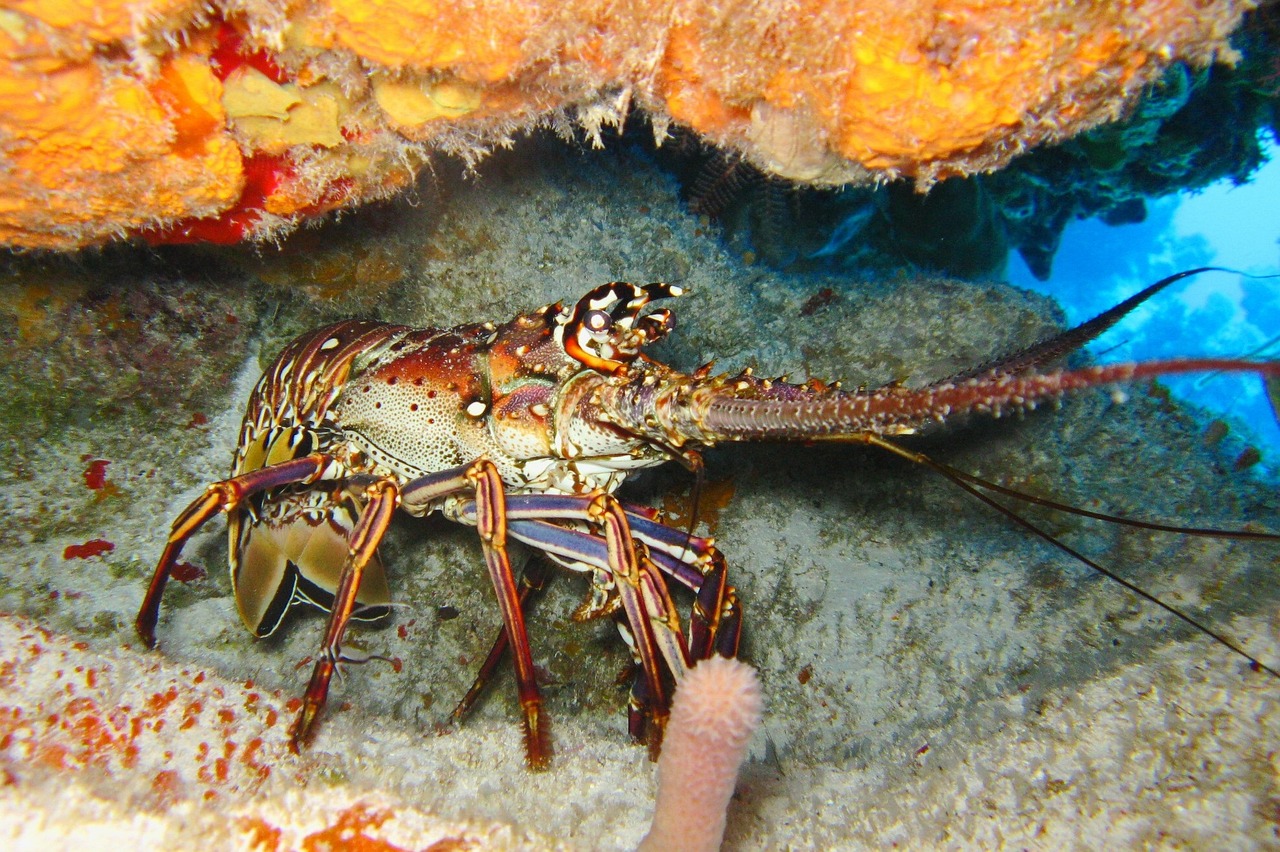
Overfishing is not just a buzzword; it’s a reality that’s wreaking havoc on our oceans and the delicate balance of marine ecosystems. Imagine a bustling city where the population suddenly doubles overnight without any infrastructure to support it. That’s what happens in our oceans when fish populations are overexploited. The repercussions are profound and far-reaching, impacting not just the fish but the entire marine community, including the coral reefs that depend on these species for their health and sustainability.
One of the most significant consequences of overfishing is the disruption of the food web. Fish play a crucial role in maintaining the balance of marine ecosystems. For instance, herbivorous fish graze on algae that can otherwise overgrow and smother coral reefs. When these fish are overfished, the algae can proliferate unchecked, leading to a phenomenon known as algal blooms. These blooms can suffocate corals, depriving them of sunlight and nutrients, ultimately leading to coral decline. The vicious cycle continues as the health of the coral reefs deteriorates, which in turn affects all the species that rely on them for habitat and food.
Furthermore, overfishing does not only affect the target species but also has devastating effects on non-target species, often referred to as bycatch. This includes juvenile fish and other marine creatures that are unintentionally caught and discarded, often dead or dying. The statistics are alarming; according to the Food and Agriculture Organization (FAO), approximately one in four fish caught globally is bycatch. This not only threatens the biodiversity of our oceans but also undermines the efforts of conservationists trying to protect vulnerable species.
In addition to ecological impacts, overfishing also has significant socio-economic consequences. Coastal communities that rely on fishing for their livelihoods are facing uncertainty as fish stocks dwindle. The loss of fish not only impacts food security but also the economic stability of these communities. Without sustainable fishing practices, the future of these communities hangs in the balance. It’s a stark reminder that the health of our oceans is directly linked to the well-being of people who depend on them.
To combat the issue of overfishing, it’s essential to adopt sustainable fishing practices. This includes implementing quotas, protecting critical habitats, and promoting aquaculture as an alternative source of seafood. By doing so, we can help ensure that fish populations remain stable and that our oceans continue to thrive. It’s not just about saving the fish; it’s about preserving the intricate web of life that exists beneath the waves.
In summary, the consequences of overfishing extend beyond just the depletion of fish stocks. It disrupts ecosystems, threatens livelihoods, and diminishes the resilience of coral reefs. To protect these vital habitats, we must prioritize sustainable practices and engage in conservation efforts that consider the interconnectedness of marine life. The health of our oceans depends on it, and so does the future of countless communities worldwide.
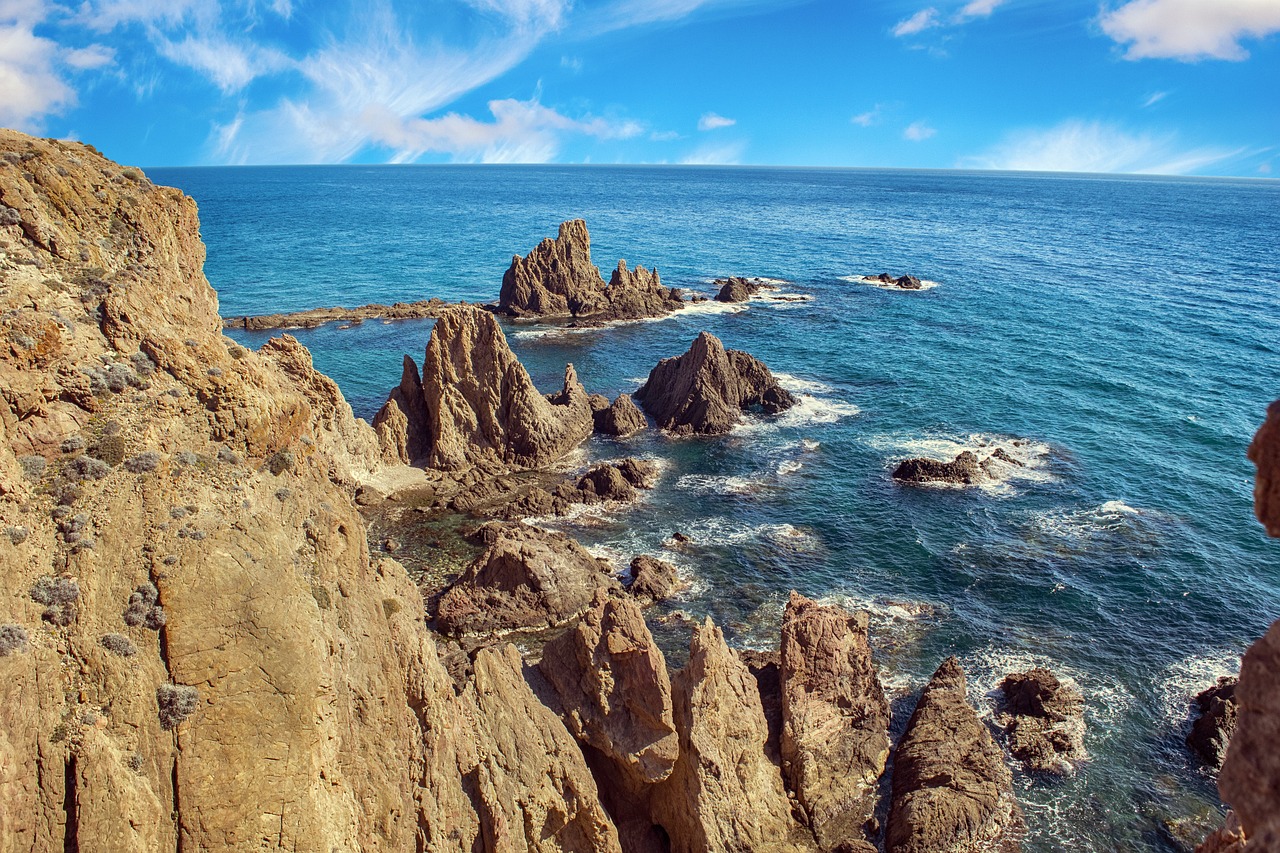
Coral reefs are not just beautiful underwater landscapes; they are essential to the health of our oceans and the planet as a whole. As the threats to these vibrant ecosystems continue to escalate, it becomes increasingly important to implement effective conservation efforts and strategies. Various initiatives are currently underway, aiming to protect and restore coral reefs while promoting sustainable use of marine resources. These strategies encompass a wide range of actions, from establishing marine protected areas to engaging local communities in conservation efforts.
One of the most effective strategies in coral reef conservation is the establishment of marine protected areas (MPAs). These designated zones restrict human activities that can harm coral reefs, such as overfishing and coastal development. By creating safe havens for marine life, MPAs allow ecosystems to recover and thrive. According to recent studies, areas with MPAs show a significant increase in fish populations and biodiversity, proving that protection can lead to remarkable ecological recovery.
In addition to MPAs, promoting sustainable tourism is crucial for coral reef conservation. Tourists flock to coral reefs for their beauty and biodiversity, but this influx can lead to environmental degradation if not managed properly. By encouraging responsible tourism practices, such as guided snorkeling tours and educational programs, we can help visitors appreciate and protect these ecosystems rather than harm them. Sustainable tourism not only benefits the reefs but also supports local economies, creating a win-win situation for both nature and communities.
Engaging local communities in conservation efforts is another vital component. When communities are involved in protecting their local reefs, they develop a sense of stewardship and responsibility. Education and awareness programs can empower individuals to take action, whether it’s participating in beach clean-ups or advocating for sustainable fishing practices. For example, community-led initiatives have successfully reduced pollution and overfishing in several regions, demonstrating the power of grassroots movements in conservation.
Moreover, innovative restoration projects are making waves in coral conservation. Techniques such as coral farming and transplantation are being utilized to rehabilitate damaged reefs and enhance their resilience against future threats. Coral farming involves cultivating coral in controlled environments before reintroducing them to their natural habitats. This method not only helps restore damaged areas but also provides a sustainable source of coral for restoration efforts. The success of these projects often hinges on collaboration between scientists, local communities, and conservation organizations.
In summary, the conservation of coral reefs is a multifaceted challenge that requires a combination of strategies. By implementing marine protected areas, promoting sustainable tourism, engaging communities, and investing in restoration projects, we can work towards safeguarding these vital ecosystems for generations to come. It’s essential that we all play a part in this effort, as the health of our oceans directly impacts our planet’s overall well-being.
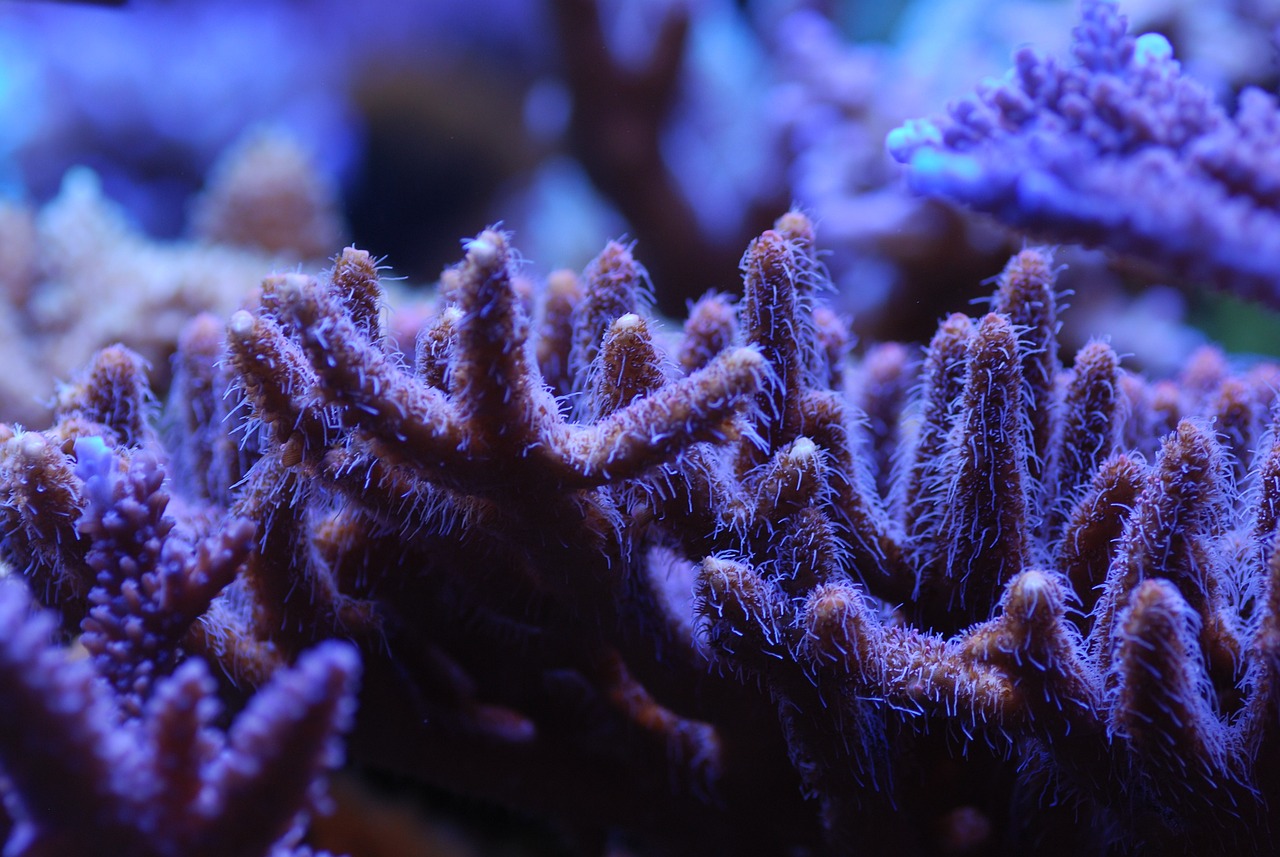
When it comes to coral reef conservation, the role of local communities cannot be overstated. Think about it: who knows the waters and the ecosystems better than the people who live and work around them? Engaging these communities not only fosters a sense of ownership but also encourages sustainable practices that can make a real difference. By involving locals, we tap into a wealth of traditional knowledge and experience that can guide conservation efforts.
One of the most effective ways to promote community involvement is through education and awareness programs. These initiatives aim to inform local populations about the importance of coral reefs and the threats they face. Imagine a fisherman learning that overfishing not only affects his livelihood but also the entire ecosystem he relies on. When people understand the interconnectedness of their actions and the health of coral reefs, they are more likely to adopt sustainable practices. Workshops, school programs, and community meetings can serve as platforms for sharing this vital information.
Moreover, community-led initiatives can be incredibly impactful. For example, local groups can organize beach clean-ups or coral monitoring programs, directly contributing to the health of their marine environments. Such activities not only help to restore and protect coral reefs but also build community ties. When individuals come together for a common cause, it fosters teamwork and a shared sense of responsibility.
Additionally, establishing partnerships between local communities and conservation organizations can amplify these efforts. Collaborative projects often lead to more effective outcomes, as they combine resources, expertise, and manpower. For instance, a partnership might involve training local divers to assist in coral restoration efforts, ensuring that the community is actively engaged in the recovery of their natural resources.
To illustrate the impact of community involvement, consider the following table that highlights successful case studies from around the globe:
| Location | Initiative | Outcome |
|---|---|---|
| Philippines | Community-Based Coastal Resource Management | Increased fish populations and healthier reefs |
| Australia | Indigenous Marine Guardians | Enhanced biodiversity and sustainable fishing practices |
| Hawaii | Community-Led Coral Restoration | Successful re-establishment of coral nurseries |
In summary, community involvement in coral reef conservation is not just beneficial; it is essential. By empowering local populations through education, encouraging grassroots initiatives, and fostering partnerships, we can create a robust network of guardians for our precious marine ecosystems. Together, we can ensure that coral reefs thrive for generations to come.
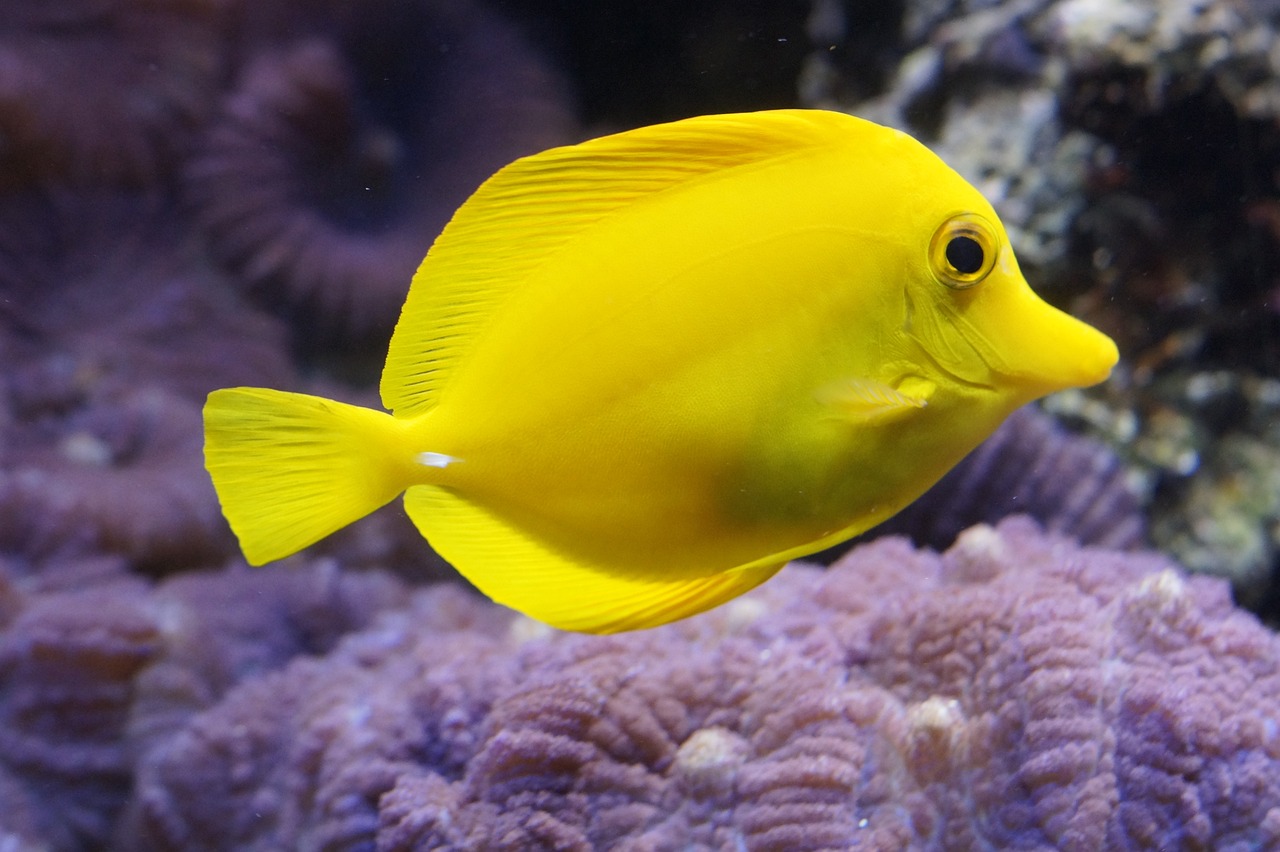
Coral restoration projects are becoming increasingly vital as we witness the alarming decline of coral reefs worldwide. These initiatives are not just about planting corals; they encompass a variety of innovative techniques aimed at rehabilitating damaged reefs and enhancing their resilience against future threats. Imagine a garden that has been neglected for years, where flowers struggle to bloom. Just like a gardener carefully nurtures the soil and plants, restoration projects work to revive the underwater gardens of the sea.
One of the most common techniques used in coral restoration is coral farming. This process involves cultivating coral in controlled environments, such as underwater nurseries, where they can grow and thrive away from the harsh conditions that often plague natural reefs. Once these corals reach a certain size, they are transplanted back onto the reef. This method not only helps replenish coral populations but also creates a genetic bank of resilient coral species that can withstand changing environmental conditions.
Another exciting approach is coral transplantation. This technique involves taking fragments of healthy coral and attaching them to degraded areas of the reef. Think of it as giving a helping hand to a friend in need. By introducing these healthy fragments, we can encourage the growth of new coral colonies, which can eventually lead to the restoration of entire reef systems. These projects often involve local communities, fostering a sense of ownership and responsibility towards their marine environment.
However, the success of coral restoration projects depends on a variety of factors, including water quality, temperature, and the presence of marine life. For example, if a reef is still suffering from pollution or overfishing, the newly transplanted corals may struggle to survive. Therefore, restoration efforts must go hand in hand with broader conservation strategies. This holistic approach ensures that we are not only planting corals but also creating a sustainable environment for them to thrive.
To give you a clearer picture of the impact of these projects, consider the following table showcasing some successful coral restoration initiatives around the globe:
| Project Name | Location | Year Established | Coral Species Involved | Impact |
|---|---|---|---|---|
| Coral Triangle Initiative | Indonesia, Malaysia, Philippines | 2009 | Acropora, Pocillopora | Increased coral cover by 30% |
| Coral Restoration Foundation | Florida, USA | 2007 | Staghorn, Elkhorn | Restored over 100,000 corals |
| Reefwatch | Australia | 2006 | Various | Improved reef health monitoring |
As we delve deeper into the world of coral restoration, it's essential to remember that these efforts are not just about saving corals; they are about preserving entire ecosystems. Coral reefs support a staggering amount of marine biodiversity, which in turn sustains the livelihoods of millions of people. By participating in or supporting restoration projects, we can all play a part in this crucial work, ensuring that future generations can enjoy the beauty and benefits of healthy coral reefs.
Coral reefs are often referred to as the "rainforests of the sea" because they provide essential habitats for a vast array of marine species. They serve as breeding grounds, feeding areas, and shelters for fish and other marine organisms, contributing significantly to global biodiversity.
Coral reefs face several critical threats, including climate change, which causes coral bleaching, pollution from agricultural runoff and plastics, overfishing that disrupts ecosystem balance, and habitat destruction from coastal development. Understanding these threats is vital for effective conservation.
Climate change leads to rising ocean temperatures, which can cause coral bleaching. During bleaching, corals expel the algae living in their tissues, leading to weakened corals and increased mortality rates. If ocean temperatures do not stabilize, entire reef systems can collapse.
Ocean acidification occurs when excess carbon dioxide in the atmosphere dissolves into the ocean, lowering pH levels. This change can hinder coral growth and weaken their structures, making them more susceptible to damage and reducing their ability to support marine life.
Pollution from sources like agricultural runoff, plastic waste, and sewage can severely damage coral ecosystems. These pollutants can lead to harmful algal blooms that suffocate corals and disrupt the delicate balance of marine ecosystems, further endangering coral health.
Overfishing disrupts the natural balance of marine ecosystems, leading to declines in key fish populations that help maintain coral health. Sustainable fishing practices are essential to protect these vital habitats and ensure the survival of both fish and coral.
Numerous conservation initiatives aim to protect coral reefs, including establishing marine protected areas, promoting sustainable tourism, and engaging local communities in conservation activities. These efforts are crucial for the rehabilitation and protection of these vital ecosystems.
Engaging local communities in coral reef conservation is essential for fostering stewardship and sustainable practices. Education and awareness programs empower individuals to take action, whether through responsible fishing, reducing pollution, or participating in restoration projects.
Coral restoration projects involve techniques such as coral farming and transplantation. These initiatives aim to rehabilitate damaged reefs, enhance their resilience against future threats, and ensure that coral ecosystems can thrive for generations to come.